The post This 1975 Piper Cherokee Six Is a Winged SUV and an ‘AircraftForSale’ Top Pick appeared first on FLYING Magazine.
]]>Today’s Top Pick is a 1975 Piper PA-32-300 Cherokee Six.
Many pilots I know regard the Piper Cherokee Six as one of those airplanes that was pretty much right from the beginning. Introduced in 1965, the big six-seater changed little over its decadeslong production run, which ended in 1990 but restarted in the early 2000s. The aircraft’s straightforward design, with fixed gear, big cabin, and lots of power, appealed to owners more interested in carrying big loads than in setting speed records. Still, with 300 hp (a 260 hp version was also available), the Six is no slouch.
If we had to pick one word to describe the PA-32-300’s appeal, we might choose “wide.” The cabin is famous for measuring 4 feet wide and 4 feet high, so passengers do not have to rub shoulders. There is also a lot of space for cargo, especially if you remove the rear seats, which does not require tools.
This 1975 PA-32-300 has 3,774 hours on the airframe and 1,799 hours on its 300 hp Lycoming IO-540-K1A5 engine since the last major overhaul. The engine has 542 hours since its last top overhaul. The aircraft’s Hartzell propeller has 367 hours since overhaul.
The panel includes a Narco Nav/Com, Garmin GN 250 Nav/Com, GMA 340 audio panel and 6-place intercom, Narco AT150 transponder, uAvionix ADS-B SkyBeacon, 6-point EGT and CHT, Davtron M655 digital display, and Piper AutoControl IIIB autopilot. Additional equipment includes aileron and flap gap fairings, Knots 2U wheel pants, SureFly electronic ignition, dual toe brakes, and dual push-to-talk switches.
Pilots looking for a straightforward, utilitarian, fixed-gear airplane with room for six and a useful load many retractables cannot match should consider this 1975 Piper PA-32-300 Cherokee Six, which is available for $149,900 on AircraftForSale.
You can arrange financing of the aircraft through FLYING Finance. For more information, email info@flyingfinance.com.
- FLYING Magazine: The Practical Endurance of the Piper Cherokee Six
- FLYING Magazine: Getting Sucked Into Aviation with a Piper Cherokee Six Owner
- FLYING Magazine: A New Take on the Faithful Cherokee Six
- FLYING Magazine: Best Used Six Seaters
- Plane & Pilot: Piper Cherokee Six 260/300
- Plane & Pilot: Choosing A Six-Seat Single
The post This 1975 Piper Cherokee Six Is a Winged SUV and an ‘AircraftForSale’ Top Pick appeared first on FLYING Magazine.
]]>The post Air Compare: Piper Lance vs. Saratoga appeared first on FLYING Magazine.
]]>Among the best at turning out new aircraft quickly and on a budget was Piper, which evolved its 1960 PA-28-140 into a range of models from basic trainers to high-performance and complex machines. In 1965 the company stretched the four-place PA-28 into the six-seat PA-32 initially known as the Cherokee Six, designed to be a sort of fixed-gear flying station wagon for growing families with lots of baggage.
Using the same fuselage and wing, Piper next developed the twin-engine PA-34 Seneca. The use of recycled materials clearly was helping the company in its mission to respond to pilots’ varied needs.
Developing a Six-Seater
By the mid-’70s, Piper wanted an airplane to compete with more-capable six-seaters like the Beechcraft A36 Bonanza and Cessna 210 Centurion. The company turned to the PA-32 design. All it really needed to do was modify the airframe for retractable gear. The resulting PA-32R Lance went on sale for the 1976 model year.
- READ MORE: Beechcraft A36 Bonanza vs. Bonanza V-tails
Over the next 30-plus years, the Lance continued to develop, sprouting a T-tail to become the Lance II and offering turbocharging as the Turbo Lance II. In 1980 the conventional tail returned, but the aircraft’s signature constant-chord “Hershey bar” wing had a new shape, with an attractive outboard taper. Its marketing name also changed to Saratoga, which the company produced, on and off, through 2008.
The PA-32 remains a popular model on the used market for the same reasons that made it a hit decades ago. For many people, it strikes the right balance of load-carrying utility, comfort, and speed. It is also stable and easy to fly. Pilots who trained in smaller Pipers will find the larger Lance and Saratoga familiar and comforting, but the design also has features that may convince high-wing pilots to give low-wing flying a try.
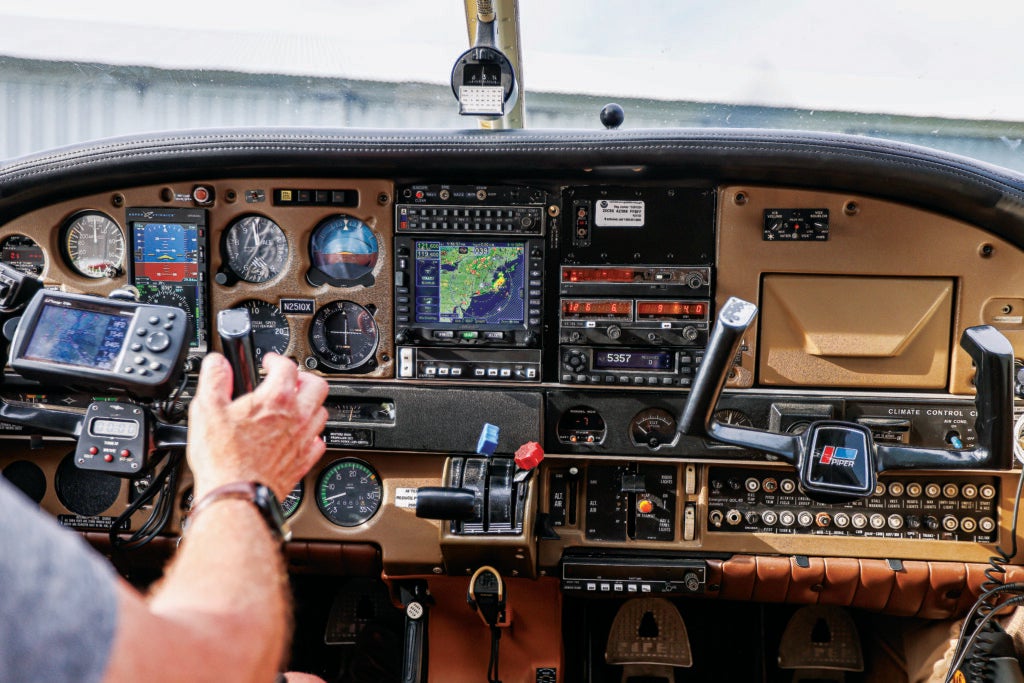
A Varied Market
Perhaps the most attractive thing about the PA-32 today is the number of versions available and the wide range of prices. Early “straight-tail” Lances generally come in under $200,000, and Lance IIs can also be bargains, in part because their T-tail design received poor reviews for pitch response—and many pilots simply dislike their looks.
The T-tail turbos also gained a reputation for running hot and other problems, but those tend to have been worked out on the aircraft that are still flying today.
While many pilots avoid the early turbo models, the Lances also have a following. They can be a good option for pilots seeking increased speed over long distances at higher altitudes. As usual, the mission influences our choice of aircraft, and some missions can be very specific.
Jim Barrett, a photographer who regularly shoots gorgeous air-to-air images of aircraft for FLYING, said he seriously considered buying a T-tail Lance several years ago, mainly because the horizontal stabilizer would cause less visual interference when shooting pictures with the airplane’s side doors removed. To Barrett, the tail on traditional aircraft is always in the way. Working around it is a perennial problem for aerial photographers.
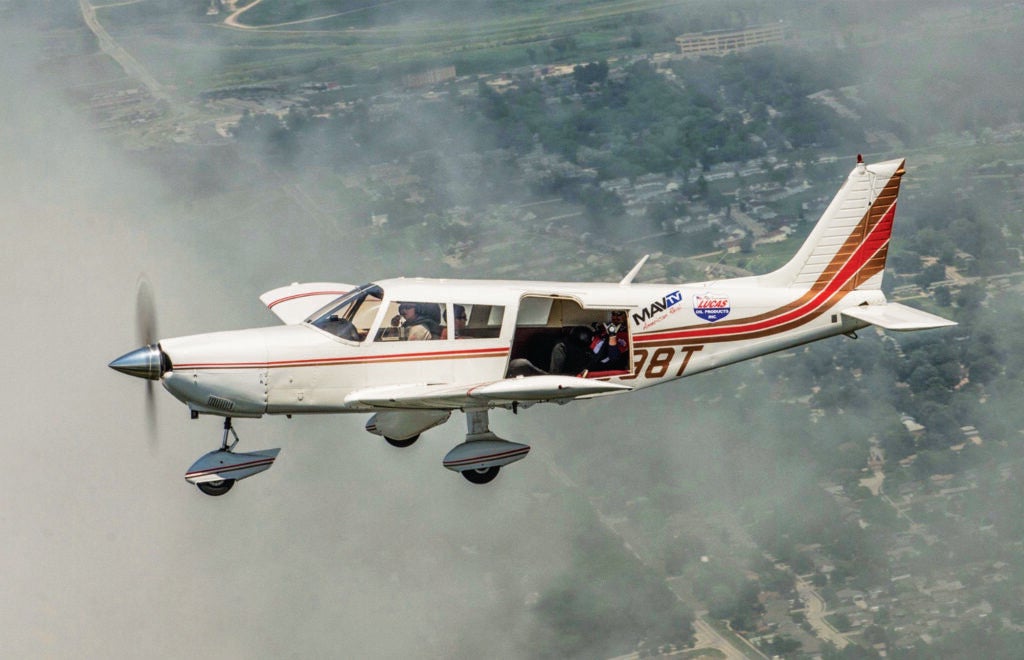
Saratoga Moves Upmarket
Most potential PA-32 buyers prefer the standard tail and are therefore happy that Piper returned to that design when it rolled out the Saratoga SP in 1980. The new longer, tapered wing improved the aircraft’s appearance and performance by most accounts while a range of upgrades, including cabin appointments and cockpit equipment, meant buyers viewed the Saratoga as a cut above the Lance.
Saratogas are all over the map pricewise, but the nice ones are expensive, and the newest models from the 2000s typically land in the $300,000-to-$500,000range. The surge in used-aircraft pricing over the last few years seems to have affected Saratogas more than some other types, with even earlier models commanding surprisingly high prices. This could reflect the fact that many people regard them as aviation’s version of the large SUV, with three rows of seats and a wide cabin that families love.
Most PA-32s have club seating that makes it easier for passengers to converse, or for nonflying parents or older siblings to keep small children entertained. The aircraft has front and rear baggage compartments, which significantly ease loading for proper weight and balance. For passengers, the extra space means you can bring more stuff. Another feature that passengers appreciate is the left-side, double-door entry into the cabin. The opening is huge and appears to have been designed as a passenger door, not a cargo hatch that people can crawl through.
“It’s a great airplane for carrying passengers, which is how I fly much of the time,” said Michael Teiger, a retired physician with 3,200 flight hours who keeps his Saratoga at Brainard Airport (KHFD) in Hartford, Connecticut. His is a classic case of the machine matching the mission. He flies regularly between Hartford and Martha’s Vineyard, Massachusetts (KMVY), and said his 1986 Saratoga, a fixed-gear version, has been a steady, reliable transport and a good instrument platform.
Bill Gennaro, a friend based at my home airport in Sussex, New Jersey (KFWN), owned a Saratoga for many years while his sons were growing up and recalled how it brought a degree of ease to long family trips.
“It was a Chevy Suburban with wings,” Gennaro said. He also described its handling as somewhat truck-like, not “harmonious” or “fluid” or other adjectives people often use when talking about their favorite high-performance aircraft. However, when it came to traveling with a family and lots of gear, the Saratoga was a winner.
“I wasn’t looking to bore holes in the sky,” Gennaro said. “It was just a great traveling airplane. You could basically set the autopilot, put your feet up and know you would get there soon.”
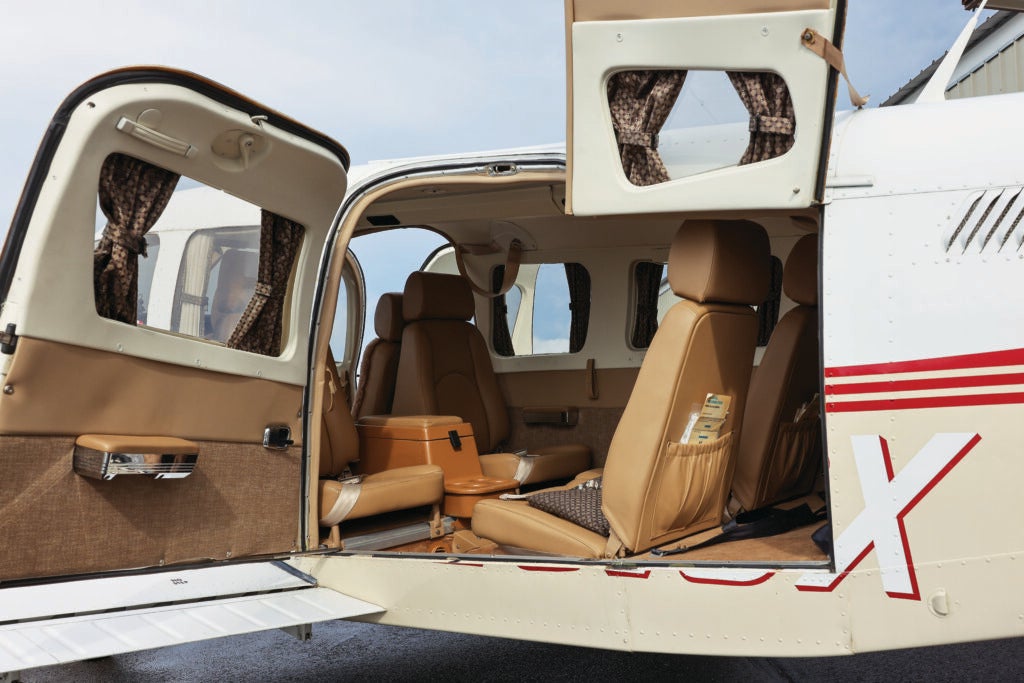
Which One Is for You?
While many shoppers will be able to find Lances with affordable purchase prices, they will need to look deeper into the ownership equation to determine which aircraft best suits their budget and mission. Saratogas cost more but might offer features that make them a better buy for certain pilots based on how they plan to use the aircraft. Because year-to-year model changes were few, most variations among different vintages of PA-32 are slight. Powered from the beginning by a 300 hp Lycoming IO-540, the PA-32 did not vary much in performance during its decades on the market.
Most owners say their aircraft cruises at a true 150 to155 knots. Piper continued to make fixed-gear Saratogas as well, which cruise about 10 knots slower. Newer models reportedly consume less fuel but do not fly any faster. Turbos can cruise in the 170s but are still considered slow for the category. Pilots generally do not buy PA-32s for speed.
Short-field operations in most cases are not part of their repertoire, either. Indeed—my instructor, Rich Bartlett, who flew a late-model Saratoga for several years, said the only downside of the design is that it “uses a lot of runway.” I recall a particular summer departure from Sussex with five on board.
I watched the takeoff run from the ramp, about halfway down the runway. All seemed well, and the airplane certainly looked like it had reached rotation speed as it lifted off and floated briefly in ground effect before settling back onto the pavement. For a moment, the airport’s 3,500-foot runway appeared that it might not be sufficient, but after another 100 feet or so they were off and climbing normally.
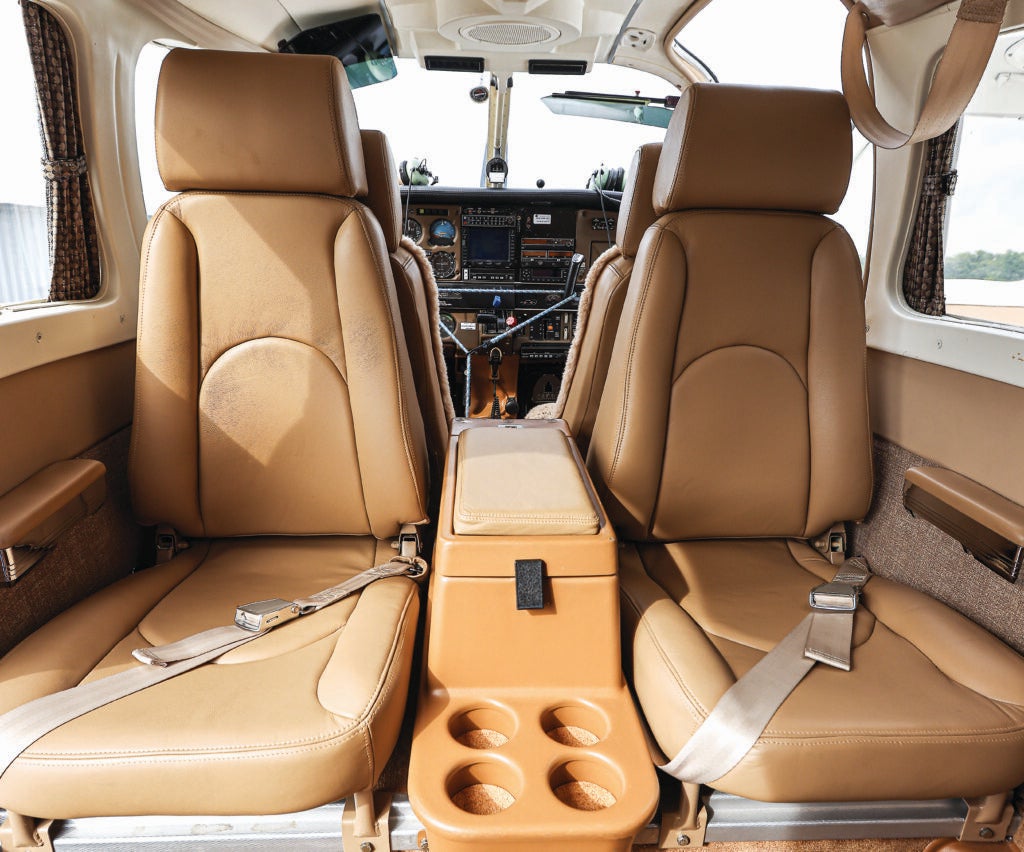
Focusing On Useful Load
Other than price, useful load can be the most notable difference between early Lances and later Saratogas. A Lance could carry more than 1,600 pounds, and overtime that figure generally decreased to just more than 1,100 for the last years of the Saratoga. Owners often talk about this downward trend in lifting capacity as a factor that influenced their buying decision.
“I think the Saratogas lost some of their useful load over time as Piper added more luxury features and equipment,” said Craig Barnett, owner of Scheme Designers, a Cresskill, New Jersey, company that designs paint schemes for aircraft and other vehicles.
Barnett moved from a Cessna 177RG Cardinal to a 1978 straight-tail Lance in the late 1990s, mainly because he wanted a bigger cabin and a boost in useful load to accommodate his growing family more comfortably on long trips. He also used the airplane to travel to trade shows and wanted more space to carry his displays. About the only complaint he had with the Lance was that it seemed like it should be faster given its 300 hp.
“When you are taking off, you feel the power. You know it’s there,” he said. However, the resulting acceleration and speed are always slightly disappointing. “You can tell the airplane is trying to get out of its own way, but it can’t quite do it.”
There was one other minor squawk with the Lance: its appearance. Barnett has spent his career obsessing over aesthetics and crisp, beautiful designs—areas in which the Lance comes up short, especially with its wide body and older-style Hershey-bar wing. “It was the chunkiest airplane I had ever gotten my hands on at the time. Not pretty, but it had what I needed,” he said.
Today, Barnett flies a Cirrus SR22 which, he said, has an embarrassingly low useful load compared with his old Lance. But the Cirrus is beautiful, he said, and his mission has changed. That said, few come on the market—even though Piper built 1,940 Lances and 1,621 Saratogas. Aircraft For Sale listed two Saratogas at the time of this writing—one 1994 Saratoga PA-32-301 with1,085 total airframe hours listed for $289,000, and one 1994 Saratoga SP with 1,952 hours total time was on the market for $319,500. For our sample table, we surveyed a total of 24 Saratogas and 13 Lances on the market at press time, with a fluctuating number for sale. So keep a careful watch if either mount suits your mission.
| Type | Number Listed | Median Price | Average Airframe Hours |
| Lance | 5 | $188,780 | 5,208 |
| Turbo Lance II | 8 | $194,123 | 4,084 |
| Saratoga/Saratoga HP/II | 9 | $346,875 | 3,023 |
| Turbo Saratoga variants | 15 | $397,217 | 2,613 |
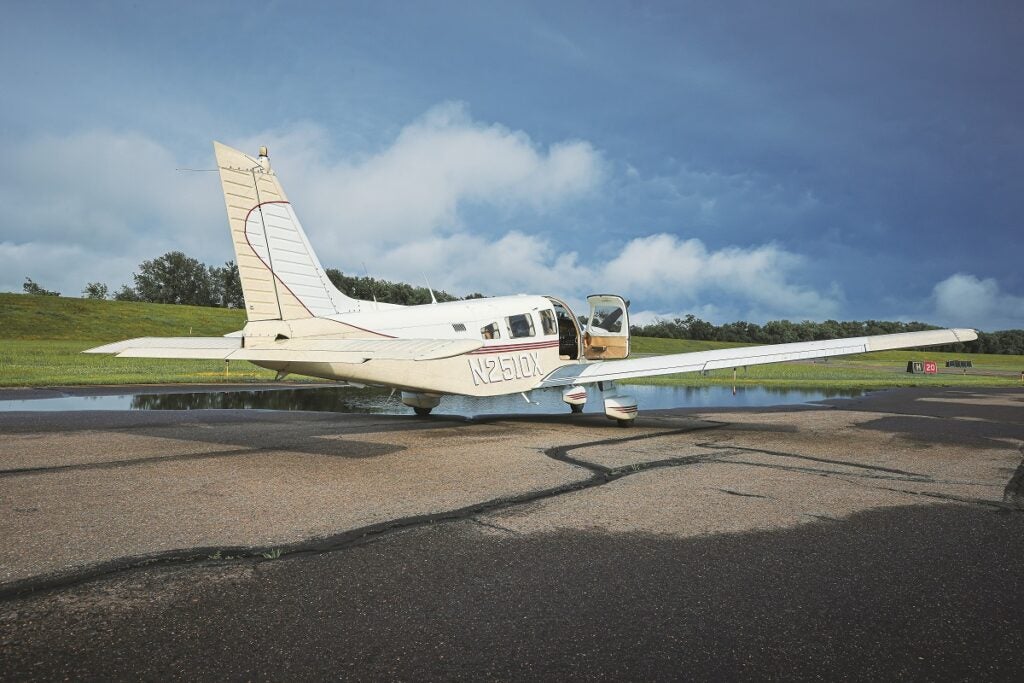
A Considerable Portion of the Business…
“What are you gonna to do with an outfit that has the audacity to compare its six-place, single-engine, 300-horsepower, high performance retractable with a couple of classics like the Centurion and the A36 Bonanza, when the airplane in question cruises at least 10 to 15 knots more slowly?” asked FLYING editor Robert B. Parke in his feature on the Piper Lance II in the June 1978 issue. “Well, for one thing, if you’re Cessna or Beech, you’d better keep your eye on this upstart; for in spite of its lower speed, the new Piper Lance II is walking away with a comfortable chunk of the six-place business.”
“Whatever you may think about the Lance II’s lack of svelteness, you must raise a few huzzahs for the gallant efforts made to give the airplane a look of distinction. The paint schemes are pleasing, and the new T-tail suggests a revolutionary change in the basic design.”
This article first appeared in the August 2023/Issue 940 print edition of FLYING.
The post Air Compare: Piper Lance vs. Saratoga appeared first on FLYING Magazine.
]]>The post This 1966 Piper PA-32-260 Cherokee Six Is a Utilitarian ‘AircraftForSale’ Top Pick appeared first on FLYING Magazine.
]]>Today’s Top Pick is a 1966 Piper PA-32-260 Cherokee Six.
Piper’s Cherokee Six grew out of the company’s need to diversify its product line. By the mid-1960s, the general aviation market was humming and manufacturers were looking beyond the typical four-seat aircraft to attract new customers. It was clear that many pilots wanted aircraft with larger cabins that could accommodate more passengers and cargo. Whether operating an air taxi or freight service, or transporting a growing family, certain customers were hungry for six-seat utility airplanes.
Piper stretched its PA-28 Cherokee four-seater to make room for two more seats, added more powerful engines, and named the new model the PA-32 Cherokee Six. The big, rugged airplane was a hit with pilots who were able to easily transition to this larger, more-capable machine without the complexity of retractable landing gear. The Cherokee Six performed like a flying station wagon or sport utility vehicle.
This 1966 PA-32-260 has 5,058 hours on the airframe, 1,253 on the engine since overhaul, and 59 hours on the propeller since overhaul. The aircraft has a useful load of 1,557 pounds. The panel includes a Garmin GTN 750 with two GI 275s, a GTX 330 transponder, GDL 88 ADS-B In and Out, JPI EDM 930 engine monitor, and PS Engineering audio panel.
Pilots looking for a powerful, utilitarian and versatile aircraft with a large cabin and six seats should consider this 1966 Piper PA-32-260 Cherokee Six, which is available for $178,000 on AircraftForSale.
You can arrange financing of the aircraft through FLYING Finance. For more information, email info@flyingfinance.com.
- FLYING Magazine: The Practical Endurance of the Piper Cherokee Six
- FLYING Magazine: Getting Sucked Into Aviation with a Piper Cherokee Six Owner
- FLYING Magazine: Shopping For A Family Airplane? Prepare To Compromise
- Plane & Pilot: Piper Cherokee Six 260/300
The post This 1966 Piper PA-32-260 Cherokee Six Is a Utilitarian ‘AircraftForSale’ Top Pick appeared first on FLYING Magazine.
]]>The post Piper Saratoga Avionics Install: Part 1 appeared first on FLYING Magazine.
]]>Time to Upgrade
I recently wrote an article in FLYING in which I cited the average age of automobiles in the United States was 12.1 years in 2021. It may surprise you that the average age of general aviation aircraft is 30 years. A sizable portion of airplanes are more than 40 years old or older. Some are keen to keep an airplane stock just as if it rolled off the factory floor. Others make minor adjustments, replacing what is mechanically necessary while striving to maintain originality. Then a subset of the population presses the limits of what the feds allow and goes full custom, much like a flying Chip Foose.
Most owner-operators fall somewhere in between. As opportunity is born out of necessity, one must seek the counsel of others when embarking on such endeavors. Even owners like my colleague Corey Sampson, who possesses an A&P and is ATP-certificated, still need support for specialized services. Sampson is more than willing to “phone a friend” when he needs a second set of eyes. That is one of the top “best practices” you can deploy.
This brings me to why we are here. Sampson introduced me to Stephen Mercer and his 1982 Piper PA-32R-301T Saratoga. I spoke with Mercer concerning the recent acquisition of his Saratoga. “The Saratoga is a great airplane, but we are looking to add a little redundancy and some enhanced safety features,” Mercer said. That is pilot-speak for “it’s time to up-do the panel.” Now comes the exciting part: Let’s talk flat panel. But which one to choose? And who can install it? The journey is just beginning.
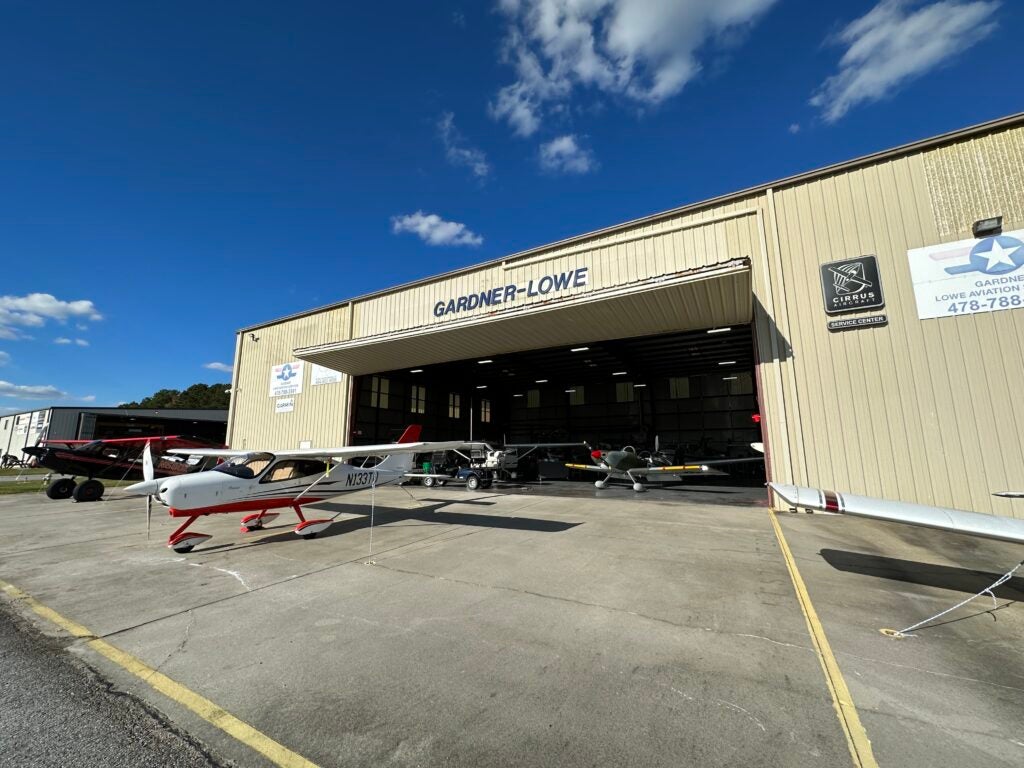
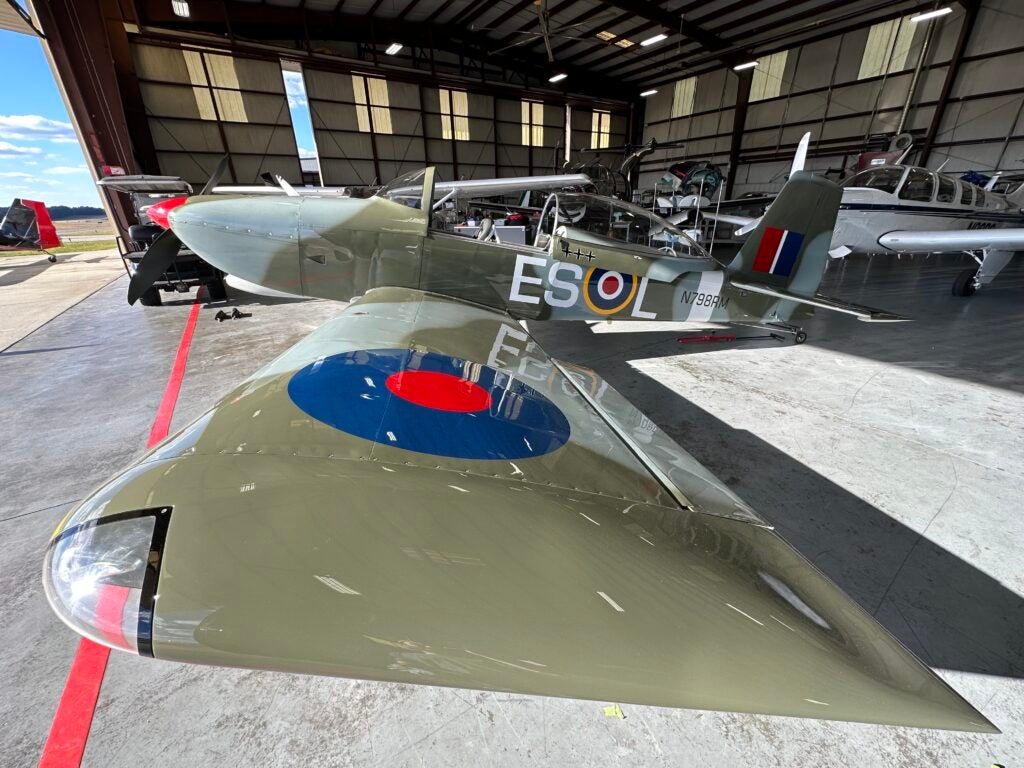
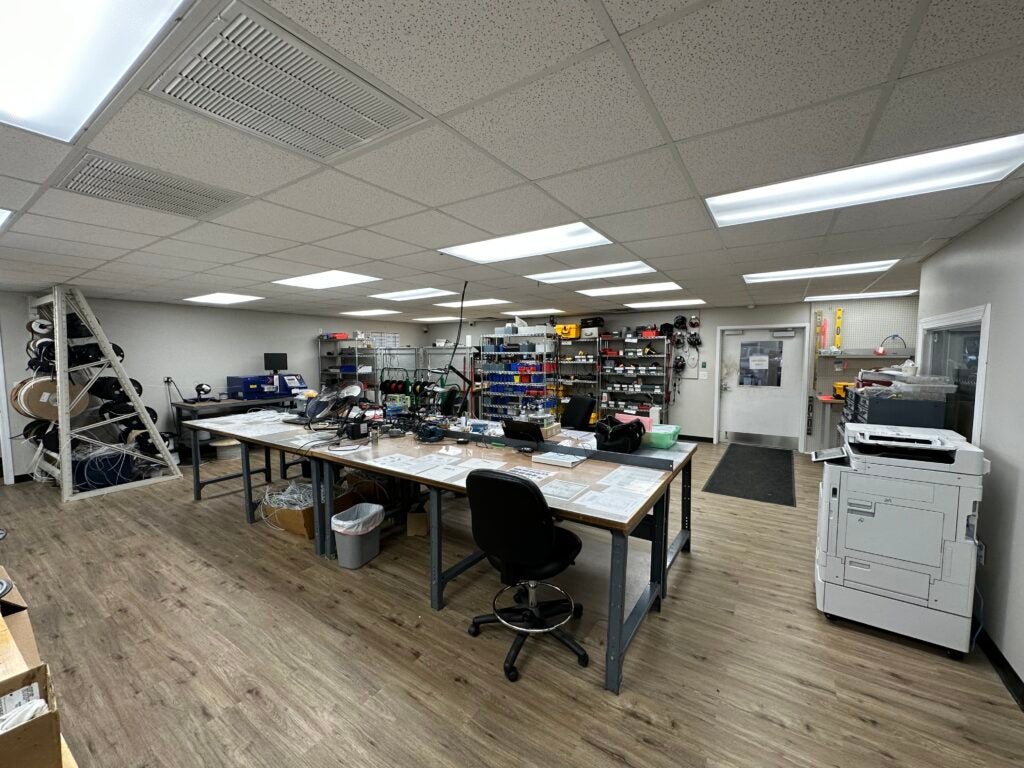
Find Your Installer
Turning onto Atlanta Regional Airport-Falcon Field (KFFC), I pass through the open gate and park in the gravel lot. I enter the Gardner Lowe Aviation Services (GLAS) lobby and go to the customer service counter. I am here to see Karl Gardner, the company president, and talk airplanes.
Gardner has been in the aircraft maintenance business for 30-plus years, specializing in avionics. After starting, growing, and selling several business entities, he gave it one more trip around the pattern and merged with legendary Lowe Aviation, the cornerstone of middle Georgia aviation since 1946. We catch up and soon get down to talking shop.
Gardner and I have known each other for years, and I even did a few engines for him during my stint as an aircraft engine shop owner. Remember my story about my guys forgetting to torque seal the through-bolts of a 470? Yeah, that was Karl who called me out on it. I’m just glad he called me and not the FAA!
I asked how things were going, and although Gardner is doing well and the shop is busy, life is not devoid of challenges. When asked to elaborate on the headwinds facing general aviation today, Karl matter-of-factly stated spare parts scarcity and cost. He relayed a quick story referencing the cost of a bellcrank for a Cessna 170, which is well more than $3,000 now. It appears they added a leg for autopilot, which is hardly justification for the cost.
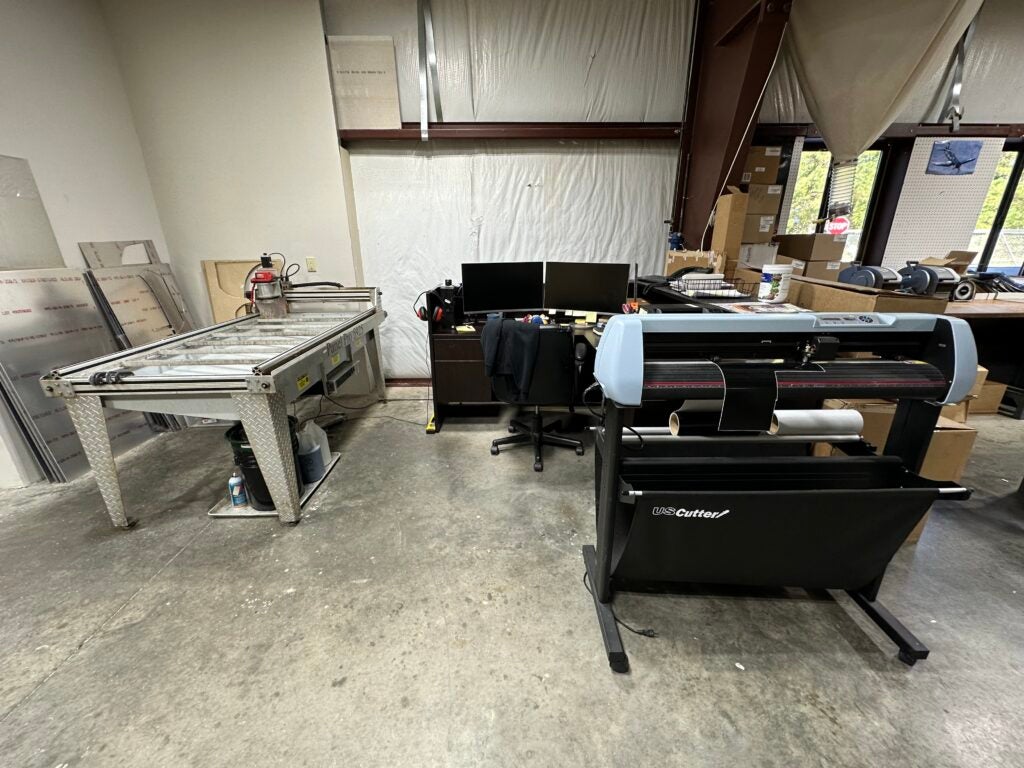
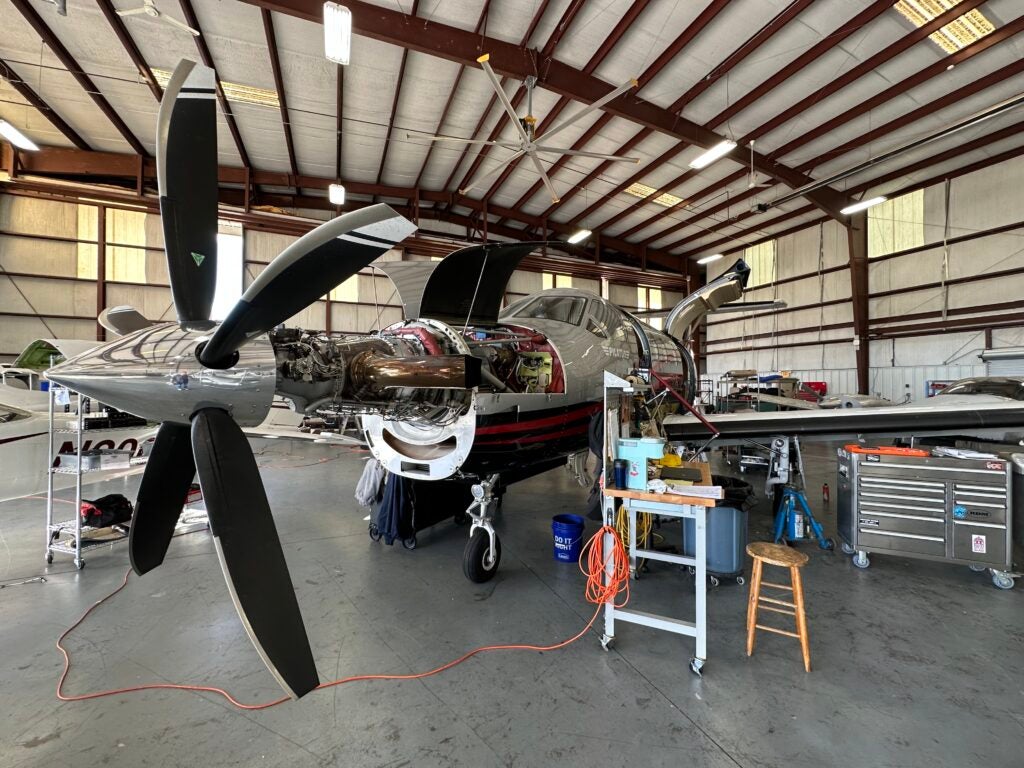

With the cost of ownership skyrocketing, I inquired as to some strategies folks are trying to stay airborne. Gardner said he sees more partnerships in airplanes now. It is an excellent way to spread out the cost and keep the price per share low. Partnerships also help airplanes, as people are more apt to fly, and airplanes hate to sit. Aero clubs are another way to get your flight fix without breaking the bank.
Eventually, our talk landed on aircraft panel upgrades. As you probably guessed by now, Gardner Lowe is scheduled to do the installation on Mercer’s Saratoga in early November. The Saratoga is getting a new Garmin system. As a Garmin factory authorized installation and service provider, GLAS has the full support of the factory behind it. By sticking with the OEM and installing via supplemental type certificate (STC), GLAS can keep the process relatively simple, which is not easy in the world of avionics installs.
Like most small business owners, Gardner finds his clients through word of mouth and other customer testimonials. Some have even taken to the internet to show their appreciation. Some of you may be familiar with Mindy Lindheim, aka Schmiiindy on Instagram, and her 1957 Cessna 182 Skylane. Lindheim documented her experience in a two-part video series on YouTube. You can check part 1 here, and then head over to part 2 to finish up.
Get to Work
Once you have settled on a maintenance facility, picked out your hardware, and have a date, it’s time to get to work. Lane Mitchell of Mitchell Aviation Services works in conjunction with GLAS and is handling the logistics for Mercer and his Saratoga. November is right around the corner, and I am sure you are as eager as they are to see this get done. The good news is FLYING will be right there when it happens. I may even shoot some video of the process. Please tune in next time, sports fans, and watch us crack open the panel of this Saratoga. Part 2 is coming soon!
The post Piper Saratoga Avionics Install: Part 1 appeared first on FLYING Magazine.
]]>The post 1978 Piper PA-32RT-300 Lance II Is a load-lifting ‘Aircraft For Sale’ Top Pick appeared first on FLYING Magazine.
]]>Today’s Top Pick is a 1978 Piper PA-32RT-300 Lance II
Piper developed the retractable Lance in the mid-1970s from the fixed-gear Cherokee Six in an effort to boost cruising speed and efficiency. The company also wanted to compete with other six-seat retractables like the Cessna 210 Centurion and Beechcraft A36 Bonanza. Pilots liked the Lance’s wide, comfortable cabin and SUV-style, load-carrying capacity. The model later evolved into the Saratoga, which Piper produced through 2009.
When this Lance II rolled out of the factory, Piper was on a T-tail kick, applying the jet-like design feature to a number of its piston aircraft. The T-tail on this Lance II gives it a stylish look that stands out on the ramp and recalls a particularly vibrant era in general aviation.
This Lance II has 3,409 hours on the airframe and 1,369 hours on its 300 hp Lycoming IO-540 engine. The panel includes a Garmin 530W and G5 HSI, Garmin 350 HC audio panel, GTX345 ADS-B transponder, Century III autopilot, and JPI EDM-900 engine monitor.
Pilots with the desire to transport large families or bulky loads in a high-performance single should consider this 1978 Piper PA-32RT-300 Lance II, which is available for $189,000 on AircraftForSale.
You can arrange financing of the aircraft through FLYING Finance. For more information, email info@flyingfinancial.com.
- FLYING Magazine: The Practical Endurance of the Piper Cherokee Six
- FLYING Magazine: Today’s Top Aircraft For Sale Pick: 1994 Piper PA-32R-301 Saratoga SP
- Plane & Pilot: Piper Lance/Turbo Lance
- Plane & Pilot: Piper 1976 PA-32-300 Lance
- Aviation Consumer: Piper Saratoga/Lance
- Aviation Consumer: Piper Saratoga
The post 1978 Piper PA-32RT-300 Lance II Is a load-lifting ‘Aircraft For Sale’ Top Pick appeared first on FLYING Magazine.
]]>The post Pistons: Enduring Investments for Capable Mounts appeared first on FLYING Magazine.
]]>That sentiment is echoed around the industry—piston-powered, high-performance airplanes with good utility hold their value over decades. What does this mean for pilots wanting to invest in a new Bonanza—or the like? You may pay what feels like a premium price, but your investment will remain secure, even as you fly the pants off that bird.
Jim Blessing, president of AirFleet Capital, concurs. “Our experience has been that aircraft that provide good utility have held their values well over time,” he says. Those types include the Cessna 210 and 206, Piper PA-32-series aircraft and, yes, Bonanzas, in his estimation. The numbers don’t lie—a Cessna 206 purchased new in 2004 still commands between $450,000 and $650,000, which is more than what the pilot paid for it, with a 2023 206H Stationair flying out of Wichita next year for about $775,000. The new buyer can still take advantage of attractive financing and depreciation to offset the higher purchase price. And their investment will offer more in return than just the joy of flying it.

| AIRCRAFT MAKE/MODEL | MFG BASE PRICE | ENGINE | SEATS | MAX TAKEOFF WEIGHT | USEFUL LOAD | FUEL BURN | MAX SPEED | MAX RANGE | STALL SPEED | TAKEOFF DISTANCE | LANDING DISTANCE |
| American Champion Scout | $302,000 (2022) | Lycoming O-360-C1G | 2 | 2,150 lb. | 810 lb. | 6.9 to 10.3 gph | 140 mph | 1,079 nm @ 55% pwr | 40 mph | 697 ft. over 50-ft. obs | 887 ft. over 50-ft. obs |
| American Champion Super Decathlon | $305,000 (2022) | Lycoming AEIO-360-H1B | 2 | 1,950 lb. | 645 lb. | 9.6 gph | 155 mph | 458 nm @ 75% pwr | 57 mph | 1,061 ft. over 50-ft. obs | 1,126 ft. over 50-ft. obs |
| Aviat Pitts S-2C | $436,100 | Lycoming AEIO-540 | 2 | 1,700 lb. | 470 lb. (acro) | 14 gph | 169 knots | 284 sm @ 75% pwr | 56 kias | 860 ft. over 50-ft. obs | 1,200 ft. over 50-ft. obs |
| Aviat Husky A1-C-200 | $422,456 | Lycoming IO-360-A1D6 | 2 | 2,250 lb. | 930 lb. | 7.6 gph @ 55% pwr | 149 mph | 828 nm @ 55% pwr | 43 mph | 265 ft. /6 secs | 398 ft. ground roll |
| Beechcraft Bonanza G36 | $999,000 | Continental IO-550-B | 6 | 3,805 lb. | 1,213 lb. | 17 gph | 174 ktas | 920 nm | 59 kcas | 1,300 ft. ground roll | 920 ft. ground roll |
| Cessna Skyhawk | $454,000 | Lycoming IO-360-L2A | 4 | 2,550 lb. | 878 lb. | 10 gph | 124 ktas | 640 nm | 48 kcas | 960 ft. ground roll | 575 ft. ground roll |
| Cessna Skylane | $574,000 | Lycoming IO-540-AB1A5 | 4 | 3,100 lb. | 1,110 lb. | 12.5 gph | 145 ktas | 915 nm | 49 kcas | 795 ft. ground roll | 590 ft. ground roll |
| Cessna Turbo Skylane | $653,000 (2023) | Lycoming TIO-540-AK1A | 4 | 3,100 lb. | 988 lb. | 17 gph | 165 ktas | 971 nm | 49 kcas | 775 ft. ground roll | 590 ft. ground roll |
| Cessna Turbo Stationair HD | $795,000 | Lycoming TIO-540-AJ1A | 6 | 3,789 lb. | 1,441 lb. | 19 gph | 161 ktas | 703 nm | 57 kcas | 1,060 ft. ground roll | 735 ft. ground roll |
| Cirrus SR20 | $524,600 | Lycoming IO-390-C3B6 | 4 | 3,150 lb. | 1,028 lb. | 11.8 gph | 155 ktas | 709 nm | 57 kcas | 1,685 ft. ground roll | 853 ft. ground roll |
| Cirrus SR22 G6 | $722,900 | Continental TSIO-550-K | 4 | 3,600 lb. | 1,246 lb. | 18 gph | 213 ktas | 1,021 nm | 60 kcas (with flaps) | 2,080 ft. over 50-ft. obs | 1,178 ft. ground roll |
| CubCrafters XCub | $396,000 | Lycoming 0-360-C4P | 2 | 2,300 lb. | 1,084 lb. | 8.5 gph @ 60% pwr | 156 mph | 800 nm | 43 mph | 170 ft. ground roll | 170 ft. ground roll |
| CubCrafters NXCub | $396,000 | Lycoming CC393i | 2 | 2,300 lb. | 1,006 lb. | 9.5 gph @ 60% pwr | 156 mph | 860 nm | 43 mph | 120 ft. ground roll | 80 ft. ground roll |
| Diamond DA40 NG | $524,000 | Austro Engine AE300 (diesel) | 4 | 2,888 lb. | 950 lb. | 5.1 gph @ 60% pwr | 154 ktas | 984 nm @ 45% pwr | 58 kcas (ldg config) | 1,302 ft. ground roll | 1,043 ft. ground roll |
| Extra NG | $580,000 | Lycoming AEIO-580-B1A | 2 | 2,094 lb./1,808 lb. (acro) | 408 lb. (acro) | NA | 202 ktas | NA | 50 kcas (acro) | NA | NA |
| Gamebird GB1 | $515,000 | Lycoming AEIO-580-B1A | 2 | 2,200 lb. | 910 lb. | 16 gph | 235 ktas | 1,000 nm | 60 kcas | 980 ft. ground roll | 1,480 ft. ground roll |
| Maule MX-7-180B | $397,000 | Lycoming O-360-C1F | 4 | 2,500 lb. | 1,030 lb. | 9 gph | 117 ktas | 932 nm | 35 kcas (ldg config) | 700 ft. over 50-ft. obs | 900 ft. over 50-ft. obs |
| Piper Archer LX | $491,000 | Lycoming IO-360-B4A | 4 | 2,550 lb. | 870 lb. | 9 gph | 128 ktas | 522 nm | 45 kias | 1,608 ft. over 50-ft. obs | 1,400 ft. over 50-ft. obs |
| Piper Archer DX | $554,000 | Continental CD-155 (diesel) | 4 | 2,550 lb. | 794 lb. | 6 gph | 123 ktas | 848 nm | 45 kias | 1,673 ft. over 50-ft. obs | 1,400 ft. over 50-ft. obs |
| Piper M350 | $1,437,495 | Lycoming TIO-540-AE2A | 6 | 4,340 lb. | 1,212 lb. | 20 gph | 198 ktas | NA | 58 kias | 2,090 ft. over 50-ft. obs | 1,968 ft. over 50-ft. obs |
| Pipistrel Panthera | 725,000 EUR | Lycoming IO-540V-V4A5 | 4 | 2,900 lb. | 1,100 lb. | 13.6 gph @ 75% pwr | 198 ktas /FL80 | 1,000 nm /155 kt/FL120 | 55 kias | 2,155 ft. over 50-ft. obs | 2,316 ft. over 50-ft. obs |
| Tecnam P2010 Gran Lusso | $626,750 | Continental CD-170 (diesel) | 4 | 2,557 lb. | 805 lb. | 5.2 gph | 140 ktas | 961 nm | 53 kcas | 1,394 ft. ground roll | 886 ft. ground roll |
| Vulcanair 1.0 | $369,000 | Lycoming IO-360-M1A | 4 | 2,546 lb. | 882 lb. | 11.6 gph | 128 ktas | 575 nm | 52 kcas | 1,310 ft. over 50-ft. obs | 1,575 ft. over 50-ft. obs |
There’s other excitement in the single-engine piston market that taps into a different kind of utility: backcountry- and STOL-focused aircraft, such as the CubCrafters XCub and NXCub, the Maule MX-7 series, and the Aviat Husky. While no company churns out tailwheel airplanes in huge numbers, CubCrafters launched its first investment offering at EAA AirVenture this summer towards expanding its manufacturing facilities to meet demand.
And what if you want your airplane to do more than land short and haul gear? A series of just-for-serious-fun aerobatic airplanes entices pilots, beginning with the Gamebird GB-1, which hit more than 50 units delivered earlier this summer. It’s joined by the latest Extra,the NG, and the Aviat Pitts S-2C.
As for piston twins—with both normally aspirated and turbocharged engines—the persistence of solid value also holds, if the airplane has seen improvements over the years. “When it comes to older twins, for example,” Blessing says, “from the finance perspective, we are often looking to see current technologies, such as panel upgrades, engine conversions, and even other airframe modifications. These [updates] coupled with [a strong history of value retention] help give us comfort in lending for 15 years or longer on some of these assets.” One reason why a Cessna 414 or 421 still commands a decent price is that there’s no real high-powered, pressurized piston twin on the new aircraft market to compete directly. Instead, piston twins come in a different guise altogether—such as the Diamond DA62 with two Austro Engine AE330s, sipping diesel while carrying up to seven passengers.

New buyers shopping for personal transportation look to this sustainable, technologically savvy prospect—or trade up to a single- or twin-engine turboprop. Another venue for light piston twins: the training market. For this segment, Diamond offers its DA42, and for Piper Aircraft, the tested-and-true Seminole. Also, Tecnam has delivered the P2006T into flight schools around the globe for more than 10 years—and the economics work out similarly to other modern jet-A-burning pistons. At 9 gph, that’s a lot of trips around the pattern towards a multiengine rating.

Tecnam also began delivering its turbocharged twin—the P2012 Traveller—to Cape Air in 2019, and the airline continues to add 10 aircraft each year towards the 100 units it will take to fully replace its workhorse Cessna 402s.
| AIRCRAFT MAKE/MODEL | MFG BASE PRICE | ENGINE | SEATS | MAX TAKEOFF WEIGHT | USEFUL LOAD | FUEL BURN | MAX SPEED | MAX RANGE | STALL SPEED | TAKEOFF DISTANCE | LANDING DISTANCE |
| Beechcraft Baron G58 | $1,599,000 | 2 x Continental IO-550-C | 6 | 5,500 lb. | 1,559 lb. | 34 gph | 202 ktas | 1,480 nm | 73 kcas | 1,391 ft. ground roll | 1,440 ft. ground roll |
| Diamond DA42-VI | $979,000 | 2 x Austro AE300 (diesel) | 4 | 4,407 lb. | 1,298 lb. | 10.3 gph @ 60% pwr | 190 ktas | 1,273 nm @ 50% pwr | 61 kcas | 1,391 ft. ground roll | 1,220 ft. ground roll |
| Diamond DA62 | $1,315,000 | 2 x Austro AE330 (diesel) | 7 | 5,071 lb. | 1,609 lb. | 11.8 gph @ 60% pwr | 192 ktas | 1,345 nm @ 50% pwr | 70 kcas | 1,575 ft. ground roll | 1,447 ft. ground roll |
| Piper Seminole | $905,000 | 2 x Lycoming IO-360-B1G6 | 4 | 3,800 lb. | 1,191 lb. | 18 gph | 162 ktas | 700 nm | 55 kias | 2,200 ft. over 50-ft. obs | 1,490 ft. over 50-ft. obs |
| Tecnam P2006T | $664,560 | 2 x Rotax 912 S3 | 4 | 2,712 lb. | 906 lb. | 9 gph | 145 ktas | 650 nm | 55 kias | 1,849 ft. ground roll | 758 ft. ground roll |
| Tecnam P2012 Traveller | $2,726,650 | 2 x Lycoming TEO-540-C1A | 2 + 9 | 7,937 lb. | 3,117 lb. | 31 gph | 194 ktas | 950 nm | 65 kcas | 1,849 ft. ground roll | 1,198 ft. ground roll |
The post Pistons: Enduring Investments for Capable Mounts appeared first on FLYING Magazine.
]]>